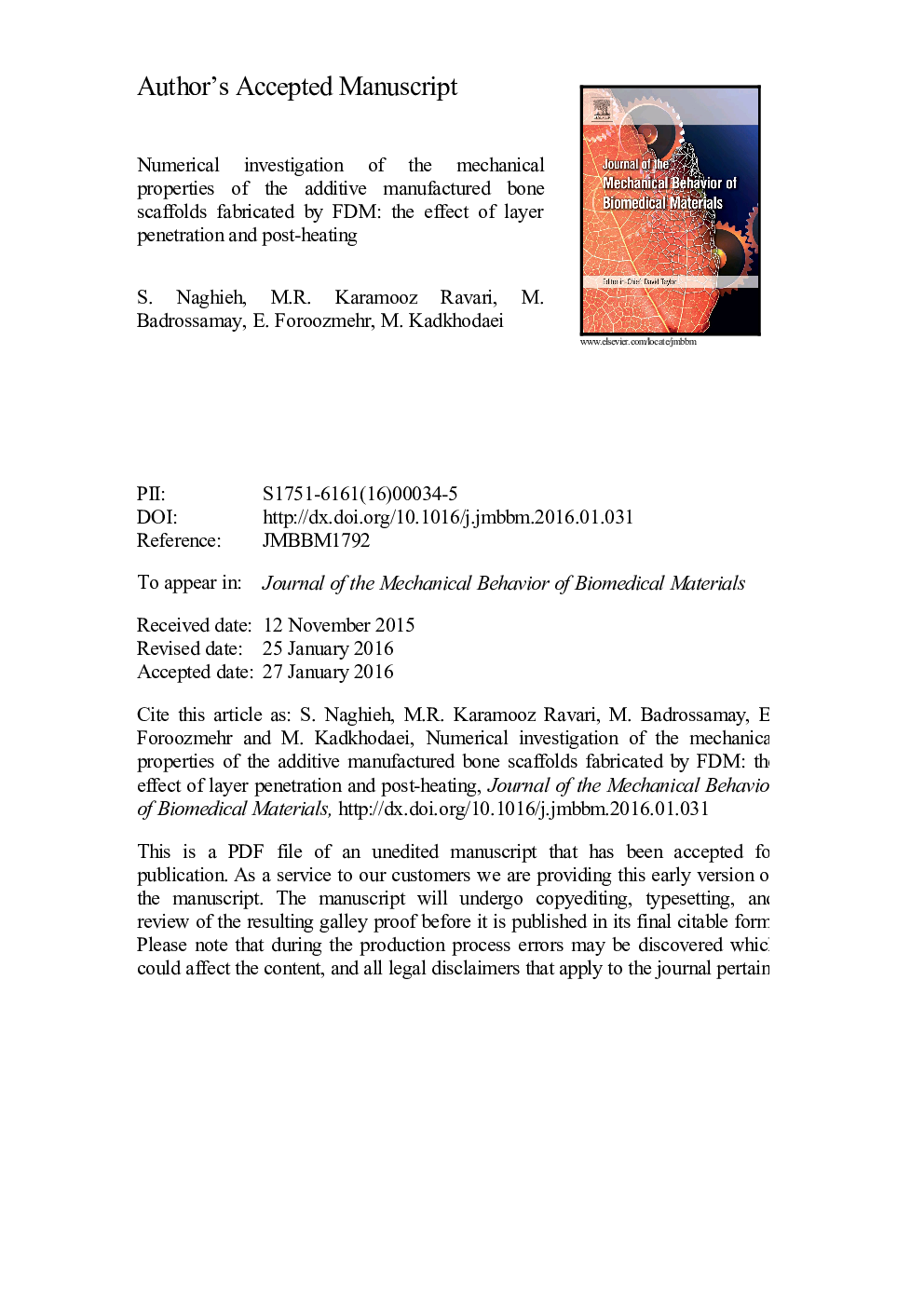| Article ID | Journal | Published Year | Pages | File Type |
|---|---|---|---|---|
| 7208078 | Journal of the Mechanical Behavior of Biomedical Materials | 2016 | 25 Pages |
Abstract
In recent years, thanks to additive manufacturing technology, researchers have gone towards the optimization of bone scaffolds for the bone reconstruction. Bone scaffolds should have appropriate biological as well as mechanical properties in order to play a decisive role in bone healing. Since the fabrication of scaffolds is time consuming and expensive, numerical methods are often utilized to simulate their mechanical properties in order to find a nearly optimum one. Finite element analysis is one of the most common numerical methods that is used in this regard. In this paper, a parametric finite element model is developed to assess the effects of layers penetration׳s effect on inter-layer adhesion, which is reflected on the mechanical properties of bone scaffolds. To be able to validate this model, some compression test specimens as well as bone scaffolds are fabricated with biocompatible and biodegradable poly lactic acid using fused deposition modeling. All these specimens are tested in compression and their elastic modulus is obtained. Using the material parameters of the compression test specimens, the finite element analysis of the bone scaffold is performed. The obtained elastic modulus is compared with experiment indicating a good agreement. Accordingly, the proposed finite element model is able to predict the mechanical behavior of fabricated bone scaffolds accurately. In addition, the effect of post-heating of bone scaffolds on their elastic modulus is investigated. The results demonstrate that the numerically predicted elastic modulus of scaffold is closer to experimental outcomes in comparison with as-built samples.
Keywords
Related Topics
Physical Sciences and Engineering
Engineering
Biomedical Engineering
Authors
S. Naghieh, M.R. Karamooz Ravari, M. Badrossamay, E. Foroozmehr, M. Kadkhodaei,
